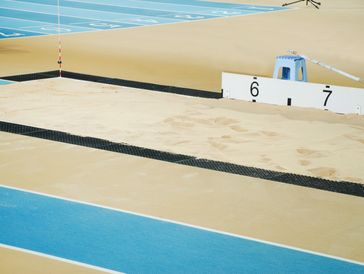Math & sport.

Basic Math
Basic Measurements
Basic Measurements
Scorekeeping involves basic arithmetic like addition and subtraction to keep track of points, runs or goals.

Basic Measurements
Basic Measurements
Basic Measurements
Basic measurement tasks in sport involve quantifying the distance, height or width of specific actions or objects. These tasks can be used in various sports, from track and field to team sports. For example, measuring the distance of a javelin throw, the height of a high jump, or the length of a hockey stick all fall under this category.

Timing
Basic Measurements
Geometry
Understanding timing, such as the time it takes for a runner to complete a race or a ball to travel across a field, is crucial for strategic decisions. .

Geometry
Speed, Distance & Time
Geometry
Geometry is used in sports to analyze angles, distances and the optimal positioning of players.
Examples of Geometry in Sports:
Shapes: The shapes of playing fields, equipment and even the ball itself are geometric.
Angles: Angles are crucial for calculating the trajectory of balls, positioning of players and making strategic decisions.
Lin
Geometry is used in sports to analyze angles, distances and the optimal positioning of players.
Examples of Geometry in Sports:
Shapes: The shapes of playing fields, equipment and even the ball itself are geometric.
Angles: Angles are crucial for calculating the trajectory of balls, positioning of players and making strategic decisions.
Lines and Planes: Lines and planes are used in various aspects of sports, such as marking boundaries and understanding the motion of objects.
Symmetry: Many sports involve symmetry, such as the design of the court in basketball or the arrangement of players on a football field.
Area and Perimeter: Understanding area and perimeter is crucial for sports fields and court design.

Speed, Distance & Time
Speed, Distance & Time
Speed, Distance & Time
Math is used to calculate an athlete's speed.
Measuring distance and time is fundamental to training, whether it's calculating how far a runner has travelled or how long it takes a swimmer to complete a length of the pool.
Want to learn more?
The action button below would take you to a speed, distance and time calculation worksheet available on TPT.

Averages & Percentages
Speed, Distance & Time
Speed, Distance & Time
Analyzing player statistics, such as batting averages in baseball or shooting percentages in basketball, relies on understanding averages and percentages.